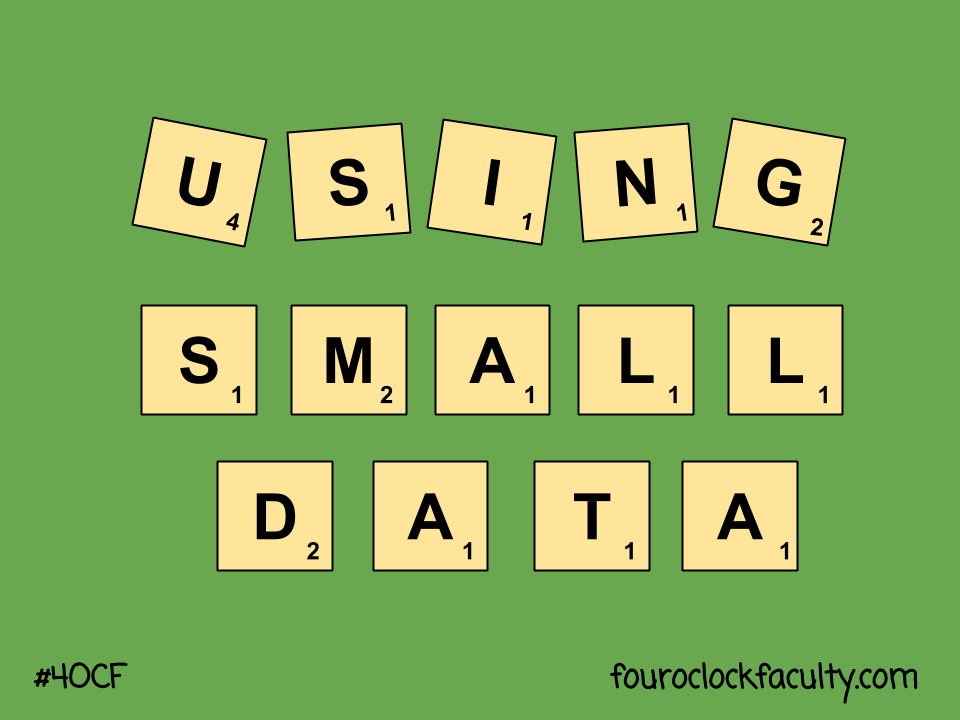Last week was the 9th annual MIT Sloan Sports Analytics Conference held in Boston. Each year, sports executives, experts, and students gather to discuss the increasing role of data analytics in sports. Statistics and data have always been a huge part of sports, and yet the importance of the data revolution has changed how teams, players, and managers look at data and their respective games.
Many teams now tend to employ some of the brightest minds in the area of examining and applying data. Educators have increasingly looked to learning analytics to provide valuable information with regard to student performance. For years, the buzzword “data-driven decision making” has been used in education to describe how the data revolution is supposed to affect student learning outcomes. However, the question remains as to whether data analytics will significantly improve education.
In many school districts, summative and formative assessments, student learning goals and objectives, and standardized tests have created a wealth of data points for each student. However, the wealth of data has yet to produce substantive improvement in many schools. While other school districts have utilized data to positively impact instruction, many districts are still inundated with data and have not trained teachers in properly analyzing and interpreting data. While it is “big data” that can drive district decisions regarding instruction and accountability, it is the “small data” gathered on a daily basis in classrooms that can really make an actual difference for teachers and students, leading to improved learning outcomes.
Within the classroom, there are several steps that teachers can take to utilize formative data to improve instruction, and therefore, improve student learning outcomes. Remember that we must meet the needs of ALL students! Try some of the following to really take advantage of data in your classroom.
Create and use assessments that truly reflect your objectives. In many classrooms, textbook supplied assessments often do not reflect the skills that teachers are hoping students are mastering. Teachers may stress critical thinking and problem solving in the classroom, then assess students using a multiple choice quiz or test. It is imperative that assessments reflect the type of learning that students do on a daily basis.
Consider using pre-tests or pre-assessments as a strong data point for planning instruction. Many teachers often skip this assessment step, thinking that the time is lost and better dedicated toward instruction. However, using part of your instructional time upfront to pre-assess can make a meaningful difference to your daily instruction. Pre-assessment data can be utilized to tailor instruction during the unit. The data can determine if certain skills can be skipped because students already have a strong knowledge base in that area. Conversely, you can learn which students might be struggling with prerequisite skills.
Take advantage of self-grading tools to create data points and save time within your classroom. A great way to save time in completing a pre-test is to utilize assessments that can be automatically scored. Tools such as Google Forms (with Add-On Flubaroo) and Quia can be used to automatically grade student assignments, saving the teacher some time, but also creating student data that can drive instruction in the classroom. While you will not be grading assignments, you can instead devote time to analyze the data and ask key questions about instructional decisions.
Make analyzing data a frequent part of your routine. With self-grading tools in hand, teachers can now easily utilize data within the classroom. Monitoring data should be a constant reminder of how students are doing within your class. If you are able to glean from assessment data which students are not meeting frequent learning targets, you can provide intervention for those struggling students on a more timely basis. Daily checkpoints and individual conferencing can tell you if students are underperforming, or if they are meeting standards or excelling. Use the data to know exactly what to do for any student at any given time.
Establish clear cut criteria for student success. This is one of two critical actions that teachers must take when analyzing data. Know, at which point, you will consider students to be struggling. Red flags should be clear. You might know that students are struggling if they receive less than 80% on a weekly quiz or chapter test! You may want to identify students who cannot complete 1/4 of homework correctly. Maybe a student who scores a 1 or a 2 on your writing rubric will trigger a red flag. Whatever the target score is for your class, be very clear about it. This will help students to know the criteria for success, as well as help you in deciding how to best address student needs.
Provide support for students who triggered red flags with established actions. Without this step, identifying red flags will not help you as a teacher. This is the second critical step in helping struggling students. After identifying students who did not meet the established cutoff score for success, you must be prepared with specific actions to helps those students. Know what those actions are. Be able to implement them immediately if students do show signs of confusion or a lack of understanding.
In my fifth grade math classroom, students completed a weekly quiz at the beginning of the period on Friday. While it was a short quiz (only 5 questions), I had an established plan of action after students completed the quiz. Using student responders to quickly grade the quizzes, my co-teacher and I would assess the results, organizing students into 3 groups, those that understood the concept (4-5 correct), those that demonstrated some understanding (2-3 correct), or those struggling with the concept (0-1 correct). We would then use the rest of the period on Friday to work with the two small groups, while those that demonstrated understanding would work independently on an extension or enrichment activity. On some days, one of us would work with those students who did get most of the questions correct (again, trying to meet the needs of ALL students). While it is important to have pre-planned actions for those who struggle, it is also important to utilize different strategies or techniques to provide additional instruction. The reason the student has triggered a red flag is because initial instruction did not work.
Establish a timeline for reassessment. The final step to utilizing data is to provide additional opportunities for students to demonstrate mastery. Again, give students a clear timeline for reassessment. In the previous example, my co-teacher and I would utilize time on Monday to provide additional instruction in the areas of concern, then individually conference with students on Tuesday to reassess. If students were not triggering any red flags at that point, we knew that the interventions were successful. If students continued to trigger red flags, we continued to provide strategic interventions.
For learning analytics to truly make a difference in schools, we must have teachers who can understand and interpret data, but can also use that data to specifically guide instruction. It is a simple process to use data to identify which students are struggling. The more important part of learning analytics is knowing what to do for those students, how to intervene to help them improve. Just as sports teams have incorporated data analytics to make critical decisions about how to construct their teams and manage their games, we must also utilize data to make critical decisions, those that impact our students on a daily basis.
By Rich Czyz @RACzyz
Sources:
The Why Behind RTI: Austin Buffum, Mike Mattos and Chris Weber, Educational Leadership, October 2010
Flagged for Success: Robyn R. Jackson, Educational Leadership, October 2010





Pingback: Using “Small” Data in the Classroom...
Pingback: Using “Small” Data in the Classroom - Talking Drum